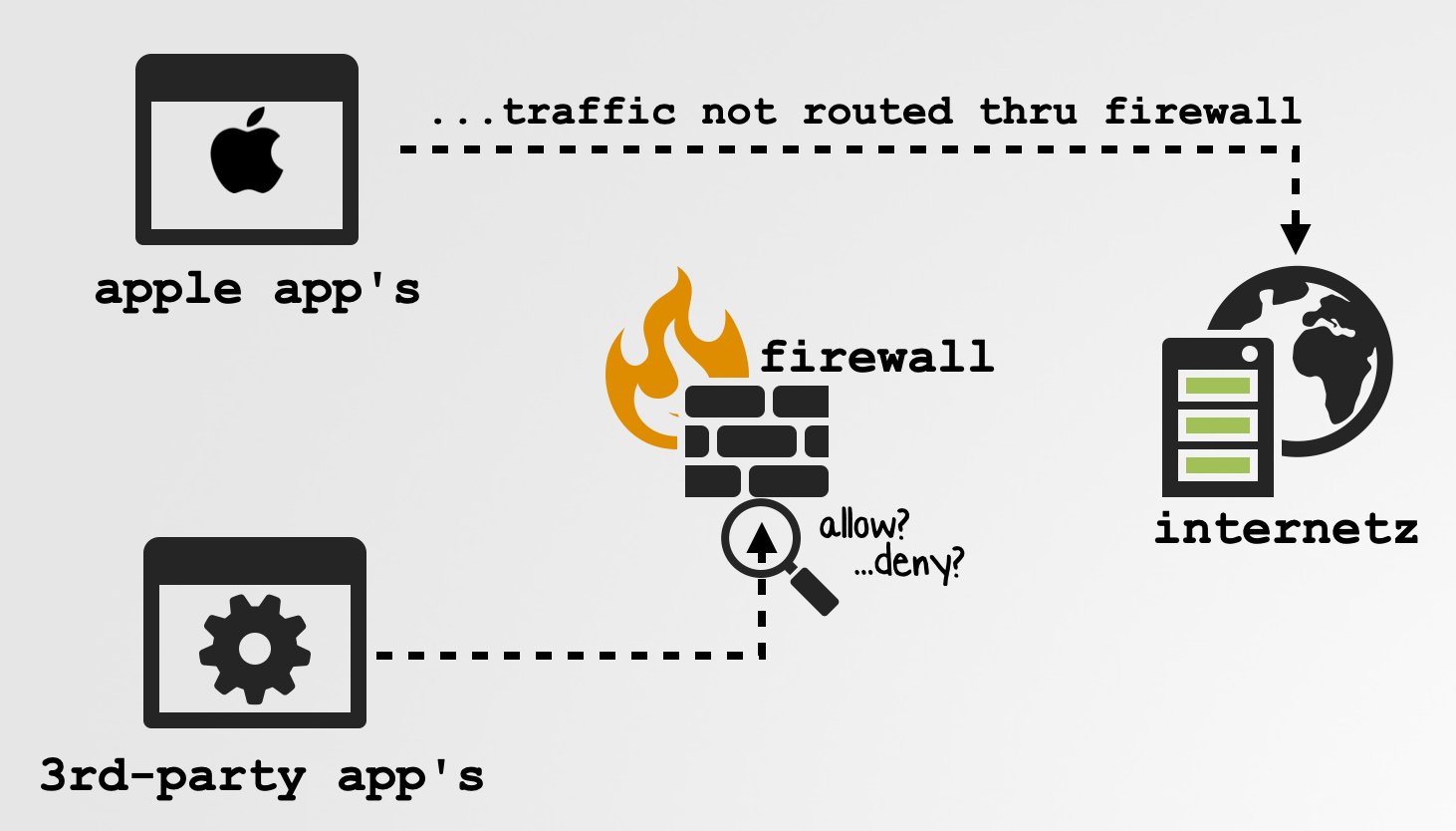

Pass in on p2p0 inet6 proto udp from any to any port = 5353 keep state $ sudo pfctl -a "com.apple/200.AirDrop/Bonjour" -sr
MAC OS FIREWALL BLOCKING SITES FULL
We have to use the full anchor path: $ sudo pfctl -v -s Anchors If the anchor name is terminated with a ‘*’ character, the -s flag will recursively print all anchors in a brace delimited block.īut it produces an error instead: $ sudo pfctl -a 'com.apple/*' -sr Note there is a bug in Apple’s implementation of PF! According to pfctl(8): At this stage, the sub ruleset is empty, which got someone really confused.īut if either “Enable stealth mode” or “Block all incoming connections” is checked in Firewall Options., dynamic rules for PF will indeed be created: $ sudo pfctl -a com.apple/250.ApplicationFirewall -s rulesīlock drop in inet proto icmp all icmp-type echoreqīlock drop in inet6 proto ipv6-icmp all icmp6-type echoreq In addition to its own rules, Application Firewall generates a set of dynamic rules (sub ruleset) for PF through anchor point com.apple/250.ApplicationFirewall. Status: Enabled for 0 days 00:02:03 Debug: UrgentĦ18 socketfilterfw 9813589183660731843 0 days 00:03:31Īpparently Application Firewall enables PF using pfctl -E. Application Firewall is disabled by default.Īfter enabling the Application Firewall ( System Preferences -> Security & Privacy -> Firewall -> Turn On Firewall), you’ll find PF is enabled too: $ sudo pfctl -s info

OS X v10.5.1 and later include Application Firewall that allow the users to control connections on a per-application basis (rather than a per-port basis). Status: Disabled Debug: Urgent Application Firewall PF is disabled by default: $ sudo pfctl -s info The launchd configuration file for PF is /System/Library/LaunchDaemons/. The main ruleset loads sub rulesets defined in /etc/pf.anchors/com.apple, using anchor: anchor "200.AirDrop/*" anchor "250.ApplicationFirewall/*" The main PF configuration file is /etc/pf.conf, which defines the following main ruleset by default in OS X 10.9 & 10.10: scrub- anchor "com.apple/*" nat- anchor "com.apple/*" rdr- anchor "com.apple/*" dummynet- anchor "com.apple/*" anchor "com.apple/*" load anchor "com.apple" from "/etc/pf.anchors/com.apple" s References Show pf- enable reference statistics ( pid/ name of enabler, token, timestamp). X token Release the pf enable reference represented by the token passed. Here’s how they are documented in pfctl(8): - E Enable the packet filter and increment the pf enable reference count. These two flags, -E and -X, are absent from pfctl on other BSDs. # is disabled only when the last enable reference is released. # PF via -E and -X as documented in pfctl(8). # each component which utilizes PF is responsible for enabling and disabling PF will not be automatically enabled, however. The latest OpenBSD version is 5.6 (as of January 2015) and the configuration syntax for PF changed around 4.6/4.7.Īpple has enhanced PF so that various system components might choose to enable and disable PF, as indicated by the following snippet in /etc/pf.conf: # This file contains the main ruleset, which gets automatically loaded Like FreeBSD 9.X and later, OS X appears to use the same version of PF as OpenBSD 4.5. PF in OS X, however, appears to be based on the FreeBSD port of PF. PF (Packet Filter) is OpenBSD’s system for filtering TCP/IP traffic and doing Network Address Translation. IPFW was deprecated in OS X 10.7, and was completely removed in OS X 10.10 it was replaced with PF.
MAC OS FIREWALL BLOCKING SITES MAC OS X
Mac OS X 10.6 (and earlier) came with IPFW, a port of FreeBSD’s stateful firewall. Starting from version 10.7 (Lion), Mac OS X includes 2 firewalls: PF & Application Firewall.


 0 kommentar(er)
0 kommentar(er)
